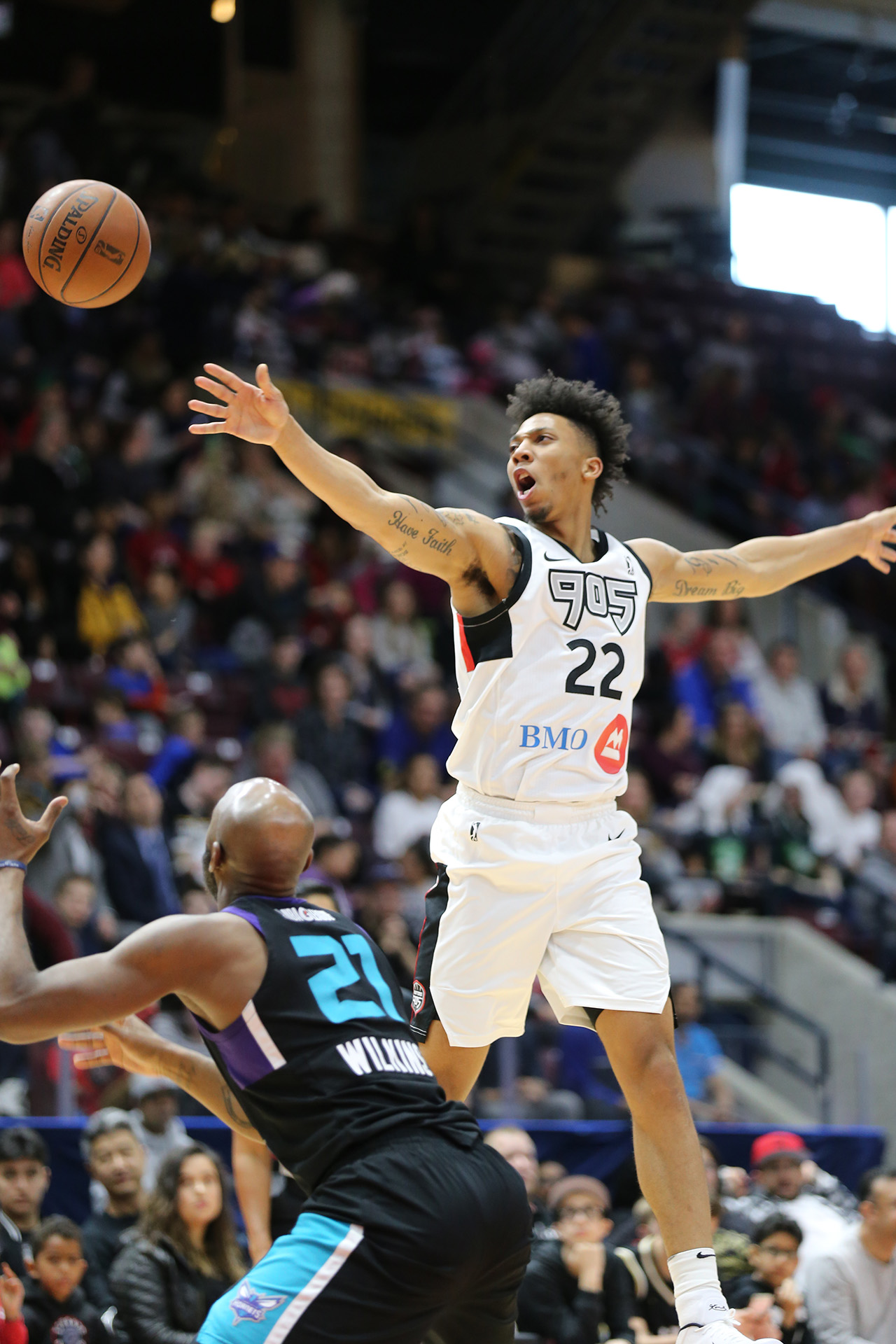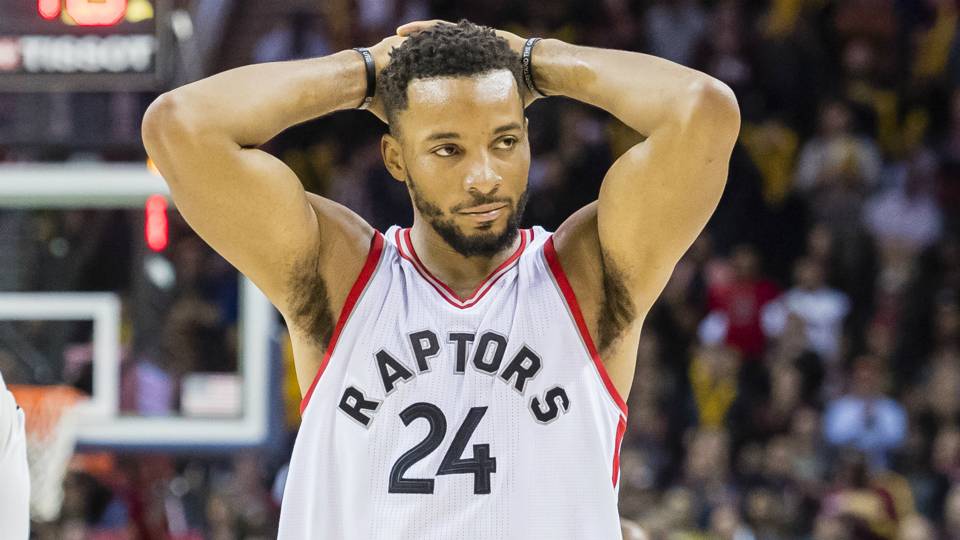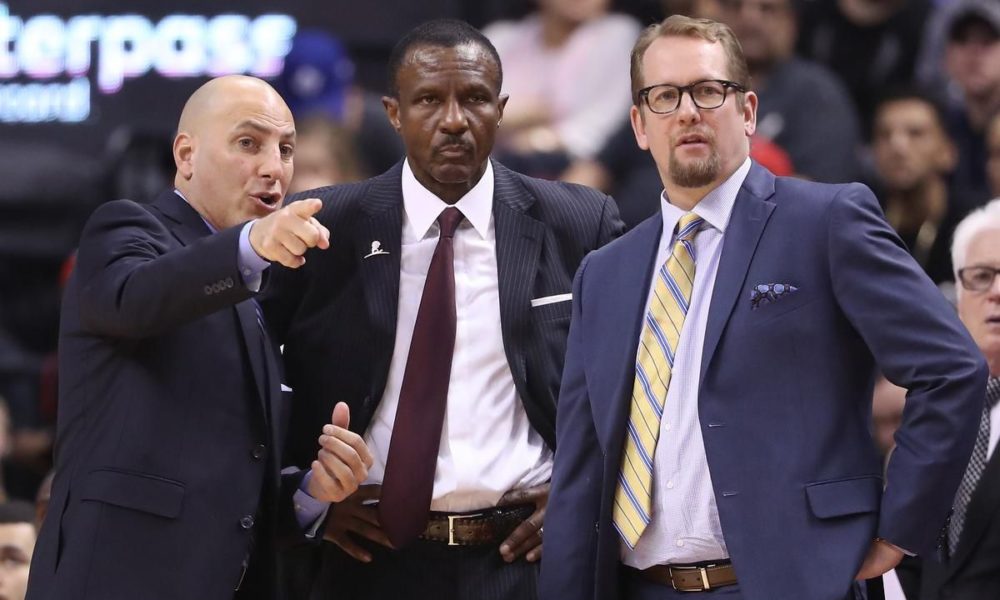Photo credit: Trung Ho / TrungHo.ca
You can keep up with all of our player reviews here.
After two years it has become clear: Malachi Richardson wasn’t ready.
Since most Raptors fans (save for Syracuse alum Leo Rautins) likely don’t know much about Malachi Richardson’s NBA path, due to him being drafted by another team and essentially only being acquired to give the Raptors breathing room under the tax to account for the possibility of other Raptors players hitting performance-based incentives (and to free up buy-out space that they never used), let me fill you in.
Despite eventually being one and done, Richardson wasn’t really on 2016 mock drafts (or at least not the first round or even early second) until Syracuse began to make their Cinderella Final Four run in March. Most scouts just assumed he would stay in school. At 6-foot-6 with a freakishly long seven-foot wingspan and a solid frame, scouts saw the potential but just didn’t think he was quite ready yet. Understandably so considering his numbers weren’t great (13.4 ppg, 2.1 apg, 37% FG%, 35% 3FG%), and Syracuse was arguably the least deserving team to make the tournament this decade at 9-9 in ACC play and 19-13 overall despite having three future draft picks. In addition, unlike traditional one and done’s, he didn’t have a historic high school career to fall back on. Although he was a McDonald’s All-American he wasn’t even top 20 in the 2015 class and was only a four-star recruit on plenty of sites.
However, during their March run, he had his best games when it mattered most and, while matched up with well-known NBA prospects on both Virginia and UNC. That matters a lot more than you’d expect. This caused many NBA scouts to take a mulligan on their evaluation of Richardson and dig through the film to see if this was who he really was. Upon reviewing his season, scouts saw a lot of inefficient nights against bottom of the barrel teams like Boston College, and a handful of semi-efficient 20-plus point road games against top-10 teams. They chose to ignore the former. Sprinkle in a few good shooting days at his draft workouts – and that he got to hide all his horrendous defensive flaws in Syracuse’s zone – and suddenly he’s a projected mid-first round pick.
The tools were most certainly there, but with that type of mystifying inefficiency, many wondered whether he was ready for the big time. Some scouts that were too enamoured with his enticing physical tools and smooth looking stroke attempted to spin that inefficiency in a positive light and it spread like wildfire. Go and look at almost any draft profile for Richardson and you will see a similar sentiment: “He just has a knack for playing at a high level in big games.” Oh. You mean, he’s not a high-level player most of the time? Regardless, as is the NBA norm, the Kings fell for it and acquired him. Ultimately, they buried him in their bench when they realized he wasn’t the player they thought he was when they drafted him and eventually traded him for 20 percent (that’s me being generous—sorry Bruno) of his value a year prior. Sound familiar Canadian Basketball fans? (See: Nik Stauskas).
(Nonetheless, I think Richardson did the right thing by entering the draft as he got three years of first-round pick salary that he had no business getting rather than idling for another year in the corrupt NCAA. However, that argument is beyond the scope of this article.)
—
So how was Richardson for the Raptors this year? Well, as I’m sure Kings writers struggled with this time last year, it’s sort of hard to tell as he didn’t play a single meaningful minute for the team. Instead, Richardson spent most of the year with the 905 and Sacramento’s G-League team, the Reno Bighorns, supposedly developing his game. It seems quite the opposite happened.
In his first year with the Bighorns, it appeared as though scouts may have been correct in their appraisal of Richardson’s NBA potential as his two major strengths at Syracuse, isolation scoring and off-ball shooting, appeared to translate fairly well: He averaged 21 ppg and shot 44% from three. However, it was clear that he still required a lot of growth if he were to ever be a rotation NBA guard as he was atrocious defensively (only 43rd percentile in the G League, per Synergy Sports- oof!), a symptom of his lack of defensive awareness, and was constantly careless with the ball as he had a 1:2 assist to turnover ratio. That’s not a typo. In addition, he showed no ability (or interest) to be active off-ball unless he was catching and shooting as he only scored a single point all season off of a cut. Still, there was a lot of hope in Sacramento as he showed plenty of encouraging signs in the G League and most of his issues at least appeared to be maturity based as he was barely 21. Unfortunately, Richardson tore his hamstring late in the year causing him to spend the lion’s share of his summer rehabbing instead of honing in on his glaring weaknesses, which is vital for rookies. Regardless, (once again) as is the NBA norm, the Kings ignored every warning sign and decided to pick up his option. Classic.
Any optimism that remained from his up and down rookie year grew dimmer and dimmer as his second season wore, on as Richardson seemingly regressed with each passing month. He began the year playing spot minutes for the Kings before being relegated back to the G League fairly quickly as he was constantly being targeted by other teams due to generally being the worst defender on the court (11th percentile overall defensively and 9th percentile defending ball screens, per Synergy Sports). Even after being sent back to Reno he still remained a shell of himself. His net rating fell from -4.2 in 16-17 to -8.7 in 17-18, his free-throw rate got cut in half despite only a moderate drop in usage (26% down to 20%, per Basketball Reference), and his once-promising three-point shooting disappeared as he posted a career-low (including his Syracuse percentages) 34%. It was rough. Then, in February he was traded to the Raptors and it (somehow) got worse.
Surprisingly, the main area Richardson had improved upon from his rookie year was defense as he jumped all the way up to the 90th percentile of G League defenders during his second year with the Bighorns after his forgettable rookie year on that end. However, upon joining the 905 all that improvement seemingly evaporated into thin air, as he fell down to a career-worst 24th percentile. Although many would attribute this decline to the adjustment period that comes with learning new defensive schemes, that doesn’t appear to be the case, as in the playoffs Richardson declined, yet again, to a near G-league worst 4th percentile despite having plenty of reps under his belt to learn the new system. Additionally, almost every offensive stat, counting and advanced, declined even more after being acquired by the 905. Raptors fans can find some solace in the fact that Richardson had some encouraging signs on the offensive end in the playoffs (95th percentile on spot ups– albeit limited attempts), and that he is entering the summer fully healthy for the first time since being drafted. He also, like at Syracuse, had his best performances for the 905 in big playoff games.
—
Although there are many things Richardson needs to improve upon to become the player scouts once thought he was (change of pace, ball handling, explosiveness, etc), that isn’t what he should be worried about as he enters the biggest summer of his basketball life. This summer isn’t about showing he can hit his once projected potential. It’s about staying in the league. Luckily for him, with the current state of the NBA (and with his ideal physical frame) the blueprint to do that is simple: “Three and D”. Since acquiring him, Raptors executives and coaches have echoed the same message about what they see in Richardson: a strong frame and a smooth stroke. The perfect recipe for a modern-day NBA wing. Unfortunately, Richardson’s visually appealing stroke is yet to bear any fruit from a percentage standpoint, save for his rookie year in Reno, so one can only hope that the Raptors appraisal of him is more akin to Moneyball’s Billy Beane than his old school scouts.
Ultimately, Richardson’s NBA future will be determined by whether or not he is willing to spend this summer fine-tuning his streaky jumper to make it more reliable, and whether he is willing to live in the film room and on the practice court with Raptors assistants to improve his defensive awareness and accountability. All the tools are there for him to become a plus defender.
Calling this summer make or break for Richardson would be an understatement. Writing the final after failing the midterm is make or break. For Richardson’s NBA career, this summer is life or death. Unless he makes meaningful strides this summer league and early next season, don’t be surprised if he is (once again) thrown into whatever deal Masai Ujiri pulls the trigger on next, purely to make the salaries work. More likely than not, expect him to become the latest cautionary tale of why teams shouldn’t bank purely on upside.



